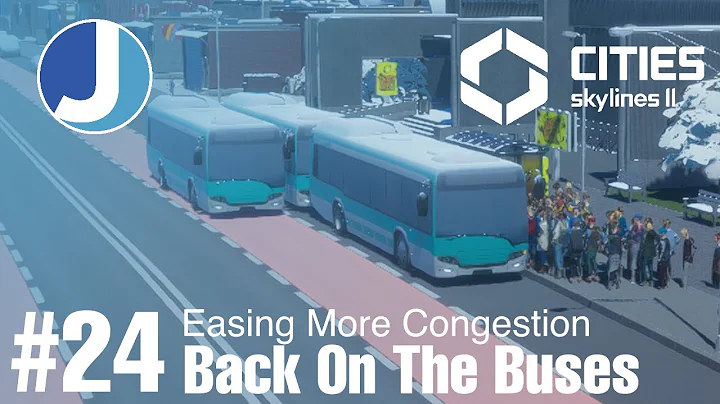Step-by-Step Guide to Replacing an Electric PTO Clutch
Table of Contents:
- Introduction
- Understanding the Electric PTO Clutch
- Signs of a Failed PTO Clutch
- Tools Needed for Replacing the Electric PTO Clutch
- Step-by-Step Guide on Changing the Electric PTO Clutch
- Releasing the Belt Tension
- Removing the Pulley Bolt
- Removing the Old PTO Clutch
- Aligning the Key and Notch
- Plugging in the Wire
- Using Thread Locker for Stability
- Putting Everything Back Together
- Torqueing the Bolt
- Retentioning the Belt
- Conclusion
- Pros and Cons of Replacing an Electric PTO Clutch
🚜 Changing an Electric PTO Clutch on a Riding Lawnmower
Is the electric PTO clutch on your riding lawnmower giving you trouble? Don't worry, in this guide, we'll walk you through the step-by-step process of changing the PTO clutch so you can get your mower back to peak performance. From understanding the PTO clutch to the tools needed and the precise instructions for replacing it, we've got you covered. Let's dive in!
1. Introduction
Maintaining a healthy PTO clutch is crucial for a smooth-running riding lawnmower. The PTO (Power Take-Off) clutch is responsible for engaging the blades, allowing you to cut grass effortlessly. Over time, this part may wear out and require replacement. In this article, we'll guide you through the process of changing an electric PTO clutch on your riding lawnmower.
2. Understanding the Electric PTO Clutch
Before we jump into the replacement process, let's take a moment to understand what an electric PTO clutch is and how it functions. The electric PTO clutch is located at the bottom of the lawnmower, attached to the crankshaft. It allows you to engage and disengage the blades with the push of a button. When it fails, you may experience issues with blade engagement or the clutch not working at all.
3. Signs of a Failed PTO Clutch
How do you know if your electric PTO clutch needs to be replaced? Look out for the following signs:
- Blades not engaging or disengaging properly
- Strange noises coming from the clutch area
- Excessive vibration when the blades are engaged
- Burnt smell or smoke from the clutch area
If you notice any of these signs, it's a clear indication that your PTO clutch requires attention.
4. Tools Needed for Replacing the Electric PTO Clutch
Before you start the replacement process, make sure you have the following tools ready:
- Socket set
- Impact wrench
- Torque wrench
- Thread locker
- Channel locks
- Wire connectors
Having these tools at hand will ensure a smooth and efficient replacement process.
5. Step-by-Step Guide on Changing the Electric PTO Clutch
5.1 Releasing the Belt Tension
Start by releasing the belt tension. Locate the spring on a chain towards the front of the deck and release it. This will relieve tension on the belt.
5.2 Removing the Pulley Bolt
Next, remove the bolt that threads into the crankshaft. You can use an impact wrench for this step. Note that when putting everything back together, the bolt should be tightened by hand and torqued to the proper specification.
5.3 Removing the Old PTO Clutch
Carefully remove the old PTO clutch by manipulating it off the crankshaft. Take note of the key inside the clutch and the corresponding groove on the crankshaft. These should align when putting the new clutch in place.
5.4 Aligning the Key and Notch
When installing the new clutch, ensure that the key inside the clutch aligns with the notch on the crankshaft. This ensures proper functioning and engagement of the blades. Also, plug in any wires that were disconnected.
5.5 Using Thread Locker for Stability
To prevent any future issues, apply thread locker to the bolt that holds the clutch in place. This will ensure that the bolt doesn't loosen over time due to vibration.
5.6 Putting Everything Back Together
Carefully put everything back together in the reverse order of the removal process. Make sure all connections are secure and the belt is properly tensioned.
5.7 Torqueing the Bolt
To ensure the bolt is tightened to the correct specification, use a torque wrench set to the recommended value. This will provide the right amount of tension without over-tightening.
5.8 Retentioning the Belt
With the assistance of channel locks, stop the crank from turning and retention the belt. This will ensure the belt is tight and properly aligned.
Resources
6. Conclusion
Replacing an electric PTO clutch on a riding lawnmower may seem daunting, but by following this guide, you can tackle the task successfully. Regular maintenance and timely replacement of faulty parts will keep your lawnmower running smoothly and efficiently.
7. Pros and Cons of Replacing an Electric PTO Clutch
Here are some pros and cons to consider when it comes to replacing an electric PTO clutch:
Pros:
- Restored blade engagement functionality
- Improved cutting performance
- Extends the lifespan of your lawnmower
Cons:
- Requires mechanical knowledge and tools
- Can be time-consuming
- Cost of replacement parts
Consider these factors before embarking on the replacement process.







